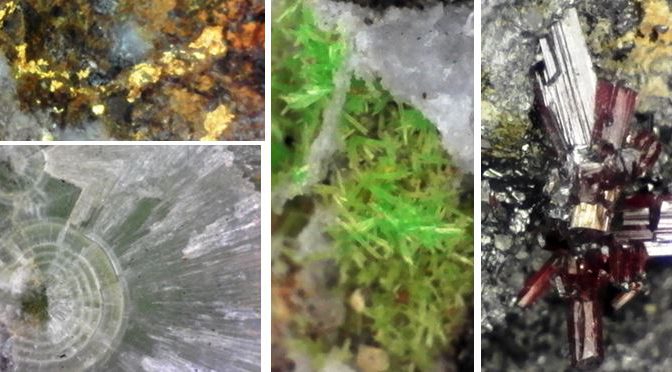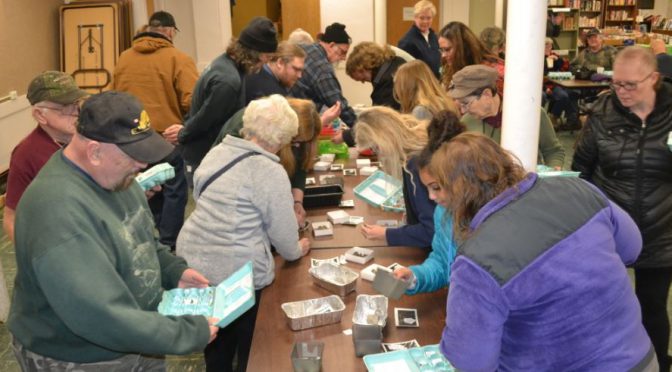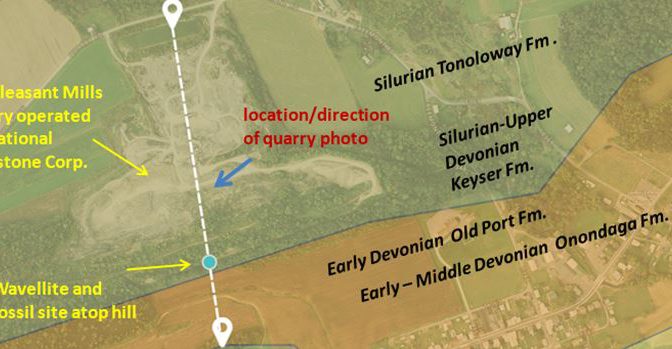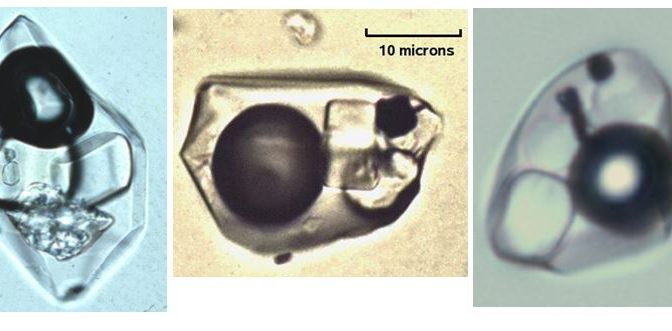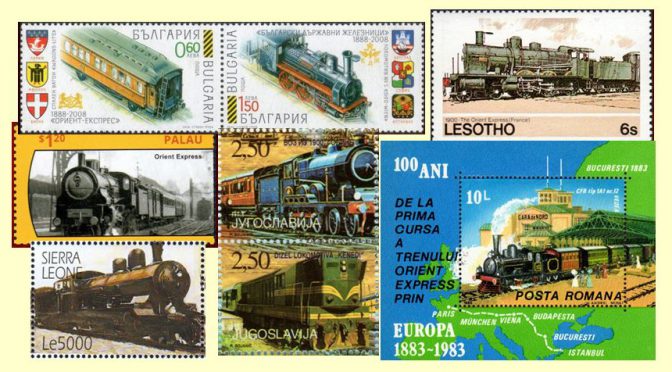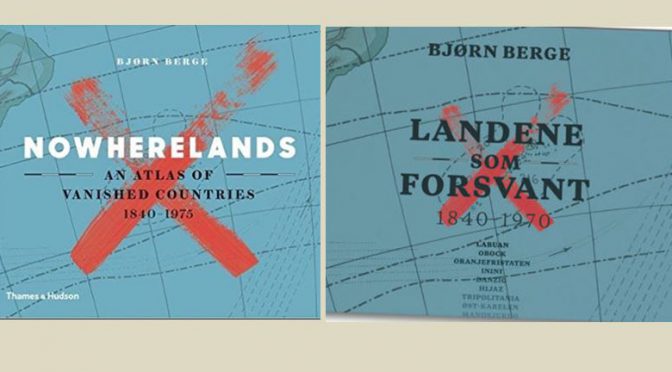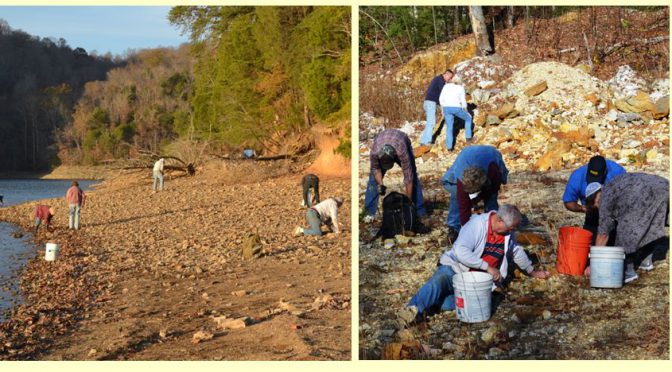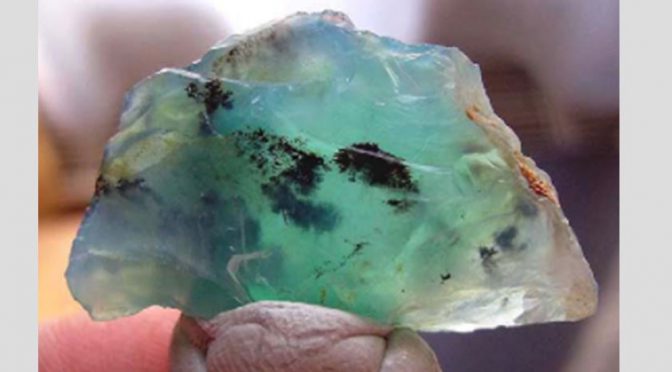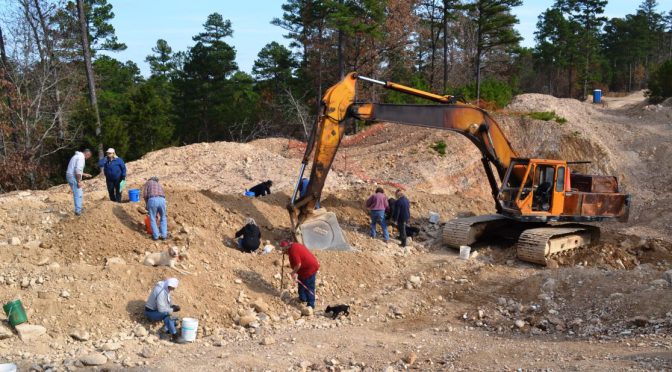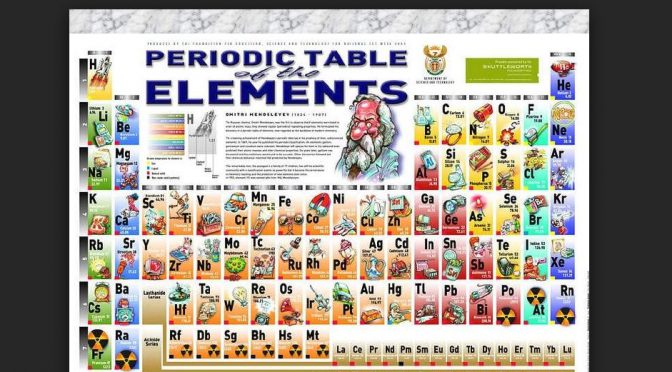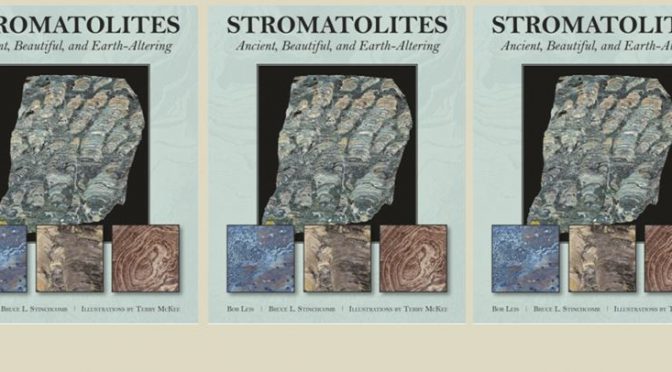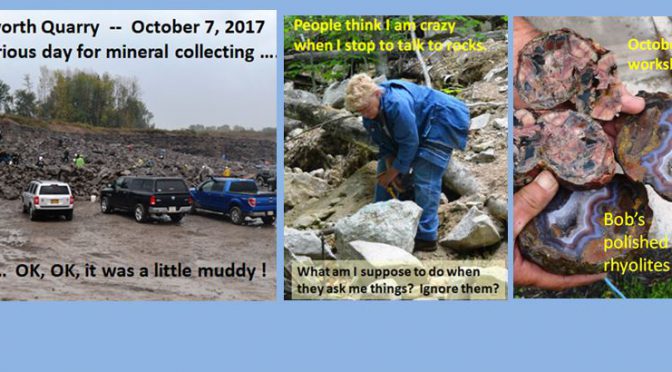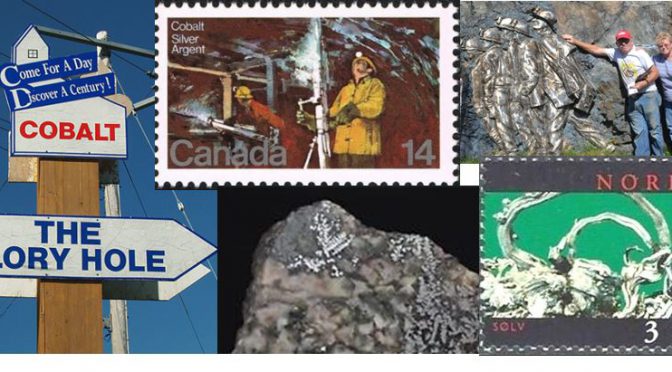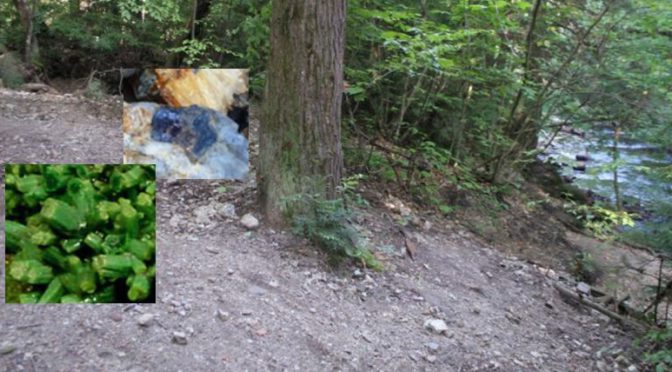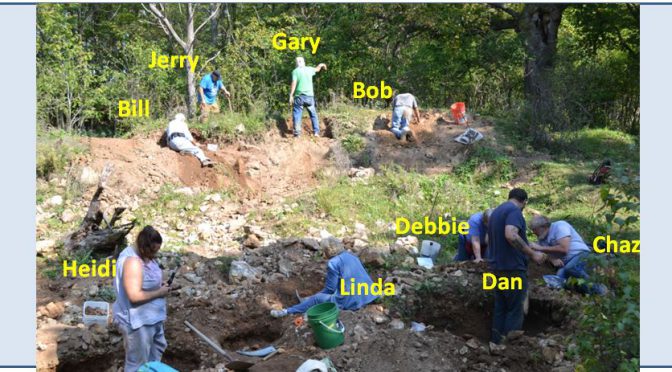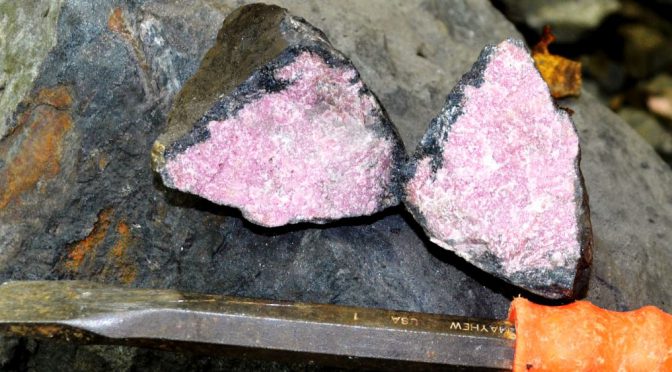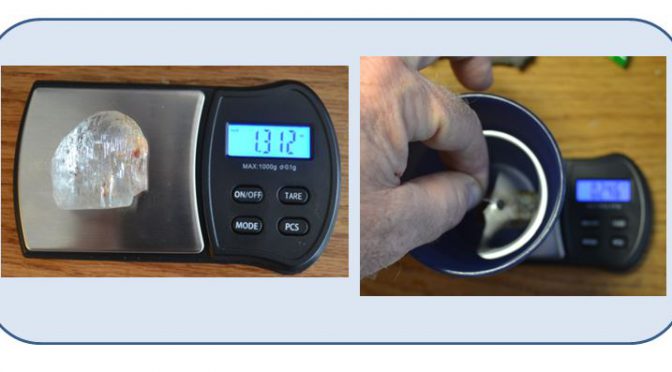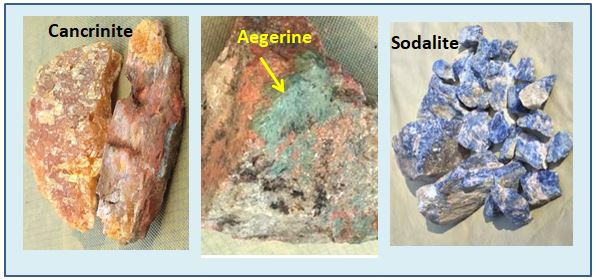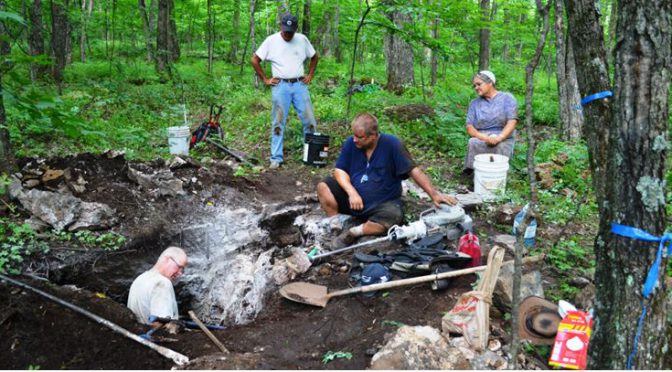I purchased a new toy in March. I acquired a Carson zOrb 65x Digital Microscope. Although not a tool for advanced photographers, I hoped that it would give me a simple tool for illustrating details I could not depict well with my Nikon. And for $50 I decided it was worthy of an experiment.
Winter WCGMC Fun
The meeting room was crowded for our February meeting as 49 members showed up to build their own egg crate mineral collections from the club’s inventory of small stones, mineral specimens and fossils. There were over 50 options to chose from when the first selections were made.
A Gastropod and Macrostrat
On occasion, cleaning out that old box of leftover and generally forgotten minerals from a past trip can provide an unexpected reward. Last month I uncovered a box of rather ordinary wavellite specimens from the club visit to Mount Pleasant Mills, PA in April of 2016. Among the cruddy and generally less than desirable wavellite discards I found a fossil gastropod that I had remembered collecting, but had pretty much forgotten. It was time to clean it up and do a little research. After all, that is what the winter months are for in western New York.
Micro-micro minerals
Some rockhounds like to collect rocks and minerals the size of small cars, or at least motorcycles. You know who you are (and so do the rest of us!). Others settle for samples that can be carried, a size that seems to decrease with each collecting season. But we also know of those who collect thumbnail specimens (less than 1”) and stick them into tiny boxes. There are even folks who like to collect specimens that require microscopes to be seen; these collectors are called micromounters. But I am going to tell you a bit about some “mineral specimens” that are even smaller. And I am even going to make up a new name for them. I am calling them micro-micro minerals.
Orient Express on Postage Stamps
Topical or thematic stamp collecting is a tremendous way to diversify and expand one’s special interest. For me of course, this takes me to minerals, fossils, geology. etc. and the thousands of worldwide stamps carrying such images. But another collector in the Rochester Philatelic Association (RPA) with an interest in trains and the use of the railroad in postal history took his topical collecting in a different direction. The following is a review of his presentation to the Rochester Club in January.
Nowherelands: A Book Review
In winter I spend a little time with my second hobby: philately. In addition to topical stamps bearing minerals and fossils, I also like to learn about forgotten and defunct places. Often stamps help tell that story. I am not alone with this interest among members of the Rochester Philatelic Association. In October of 2015, Steve Eisinger entertained us with his presentation entitled “Confusing, Obscure, Bizarre and Defunct Countries – Their Coins and Stamps”: fascinating stories about forgotten places.
And now, for all of us who enjoyed Steve’s presentation, there is a new philatelic book with the same theme. “Nowherelands- An Atlas of Vanished Countries 1840-1975” reviews the history and geography of some 50 vanquished countries through the eyes of the country/kingdom’s stamp issues. The author, Bjorn Berge, is a Norwegian philatelist with a keen interest in history, a tireless commitment to research, and a ability to craft a relevant and enjoyable story.
The book was first published in Norwegain in 2016 with the title Landene som Forsvant. In late 2017, an English translation became available online.
Bjorn Berge notes in his introduction, “The stamps serve as the core evidence, providing concrete proof that the countries did in fact exist.” Countries such as Karelia (now part of Russia) that existed only for 17 days in 1922. Not much time to form much of a government, but apparently enough time to issue a postage stamp (heck 15 of them!), thereby insuring its immortality, at least to philatelists. Or the Kingdom of Two Sicilies which united the Kingdoms of Sicily and Naples from 1815-1860 and issued a set of stamps depicting the kingdom’s coat of arms stamps in 1858. And then there is Inini, Biafra, Nandgaon, Obock, Upper Yafa, and this list goes on. Each entry includes a map, a bit of history, and the story behind the designs of the stamps.
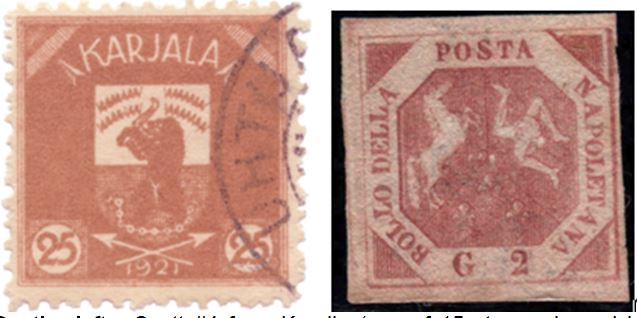
On the right: Scott #3 issued in 1858 by the independent kingdom of Two Sicilies.
The book received a positive review by Phillip Coop in the January 2018 issue of The New CartoPhilatelist, the journal of the ATA Study Unit of Maps on Stamps, and by Angela Riechers in the online October issue of Print Magazine. The 200 page book can be obtained from Amazon online for less than $20.
Full reference:
Berge, Bjorn, 2017, Nowherelands – An Atlas of Vanished Countries, 1840-1975, Thames and Hudson, 200 p. (originally published in Norwegian in 2016)
Collecting In North Carolina and Tennessee
Last month I wrote about the Arkansas portion of Wayne County Gem and Mineral Club’s November field trip south (quartz, quartz and more quartz). But we did not stop there. After three days of collecting SiO2 in and around Mt. Ida, Arkansas, ten of us pointed our large black van east and headed to Tennessee and North Carolina. There was still a bit of space to fill in the van and in the trailer and we simply could not head north without filling all possible nooks and crannies. Here is how we did it! Continue reading Collecting In North Carolina and Tennessee
Peruvian blue opal
Wayne County Gem and Mineral Club throws a marvelous Christmas party each year and 2017 was no exception. When it came time for me to select my club gift from the table of bright red boxes at the holiday party I did not hesitate. I took one from the middle of the back row and went back to my table to see what I had been gifted. I was not disappointed. I opened my bright red box and pulled out a colorful blue layered rock. The label simply said “Peruvian opal”. I was pleased for two reasons: first I did not have any opal from Peru, but more importantly I knew nothing about it. I would have fun back home while the snow fell outside researching my new “acquisition”. A third bonus: as a rough piece, it will also give me something to cut and polish at an upcoming workshop. Continue reading Peruvian blue opal
Stromatolite or maybe not?
Having collected stromatolites in several locations in New York and Ontario, I was attracted to a small polished piece offered this past October by a dealer at the Rochester Gem and Mineral show. It was labeled Kabamba Jasper – stromatolite, Madagascar. It was a pretty green color, showed physical characteristics of a stromatolitic origin, and best of all, it was reasonably priced. I bought it and came home to research the geology and age of my new find. Immediately, things got complicated.
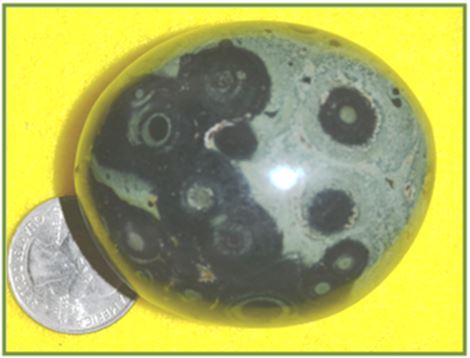
Arkansas for QUARTZ
In November of 2017, Wayne County Gem and Mineral Club undertook a 9 day collecting trip to Arkansas-Tennessee-North Carolina. This is mostly a photo essay from the first half of the trip in the Arkansas quartz district of Mt. Ida and Jessieville. Published in WCGMC December 2017 newsletter. Part II on the rest of the trip will follow.
3300 miles and 3300 pounds of Arkansas quartz: the miles are accurate, but the weight may be a bit of an understatement. Once someone started putting large clusters and quartz-covered pieces into the trailer (I think it was Glenn!) it seemed contagious. Everyone simply needed more! Buckets were filled at three sites, half bushel baskets with crystals encased in red Arkansas mud were purchased, we traded for yet more, and eventually even the spaces under the seats in the van were dedicated to Arkansas quartz. And we hadn’t even headed to North Carolina yet!
The Origin of the Elements
Have you ever sat down to think about where the chemical elements in all those neat minerals we collect came from? I mean in the grand scheme of things, like as the universe forms and evolves.
We collect metallic minerals, like copper (Cu) in chalcopyrite and bornite and in colorful carbonate secondary minerals like malachite and azurite. The latter require carbon (C) as does calcite with its calcium (Ca) cation and dolomite when there is sufficient magnesium (Mg). WCGMC has travelled to Cobalt, Ontario in search of silver (Ag) in its pure form as well as cobalt in arsenic minerals (Co, As).
A Book Review: Stromatolites
Bruce Leis has been an enthusiastic collector and researcher of stromatolites for over two decades. He has visited them worldwide, photographing their distinctive patterns and studying their geologic setting. In 2015 he teamed up with retired professor Bruce Stinchcomb and paleo-artist Terry McKee to produce a unique book detailing these wonderful and important geologic features. Anyone interested in earth’s geologic history and the development of life on this planet should enjoy their wonderfully illustrated 176 full page size treatise.
A very busy bunch of rockhounds
The days were shorter in October, but the weather during those days was spectacular and my favorite group of rockhounds was as busy as ever taking full advantage. The month could easily be renamed Octoborocks by the Wayne County Gem and Mineral Club.. While we weren’t planning for our 10 day November trip to Arkansas and other warmer southern spots, we were doing just about everything imaginable. Continue reading A very busy bunch of rockhounds
Minerals, stamps, and Cobalt, Ontario
Once in a while I like to combine my two primary hobbies, philately (stamp collecting) and mineral collecting. This is “once in a while” version 2017. This summer I participated in two separate week-long trips to Ontario to collect minerals: once with the Niagara Peninsular Geological Society of St. Catharine’s, Ontario and once on the annual Wayne County Gem and Mineral Club Canada trip. Now back home and with October baseball on TV, I decided to revisit my mineral finds and pictures from those trips and mix in a bit of philately. This first installment focuses on the historic mining district of Cobalt, Ontario, a site visited on both trips.
Manhan Mine, Loudville, MA
Sometimes the history of a mining/mineral location can be as interesting as the mineral collecting itself. Loudville, and the Manhan Mine, is one such example. The mineralization at this historic location in western Massachusetts was discovered by Robert Lyman in 1678. When lead was first recovered two years later, the site became the first lead mine in North America. Lyman is said to have traded information on the location to Marshall Pynchon for one cow, and Pynchon worked the mine for about 20 years. It was during this time that the oxidized ore (with the prized pyromorphite and wulfenite) was thrown aside on the dumps. Only the primary sulfide ore, rich in galena, could be processed.
Bush Farm tourmaline
A September field trip to several of our favorite sites in St. Lawrence County has become a WCGMC tradition the past several years and 2017 was no exception. We collected at Benson Mines, Rose Road, Powers Farm and other sites along the way. But this year we also returned to a site we had not visited in several years. We sought tourmaline and tremolite at Bush Farm on Welch Road in Gouverneur.
Scouting western Massachusetts for mineral sites
If you read my blog much, you know that I am an active member of the Wayne Country Gem and Mineral Club of western New York State and that I edit the club newsletter. You may even know the club motto: WCGMC is always looking for new places to dig. Well, this fall we ventured in New England on two occasions looking for new opportunities to include in our 2018 field trip season. In mid- September, two of us scouted out four sites in western Massachusetts and came back happy to report that several of them could form the basis of a trip to that region. In mid-October several of us plan a similar trip to visit several sites in western Connecticut. Later this fall or winter I’ll probably summarize that trip.
Without a doubt, the highlight of the Massachusetts trip was collecting rhodonite at the Betts Manganese Mine in Plainfield, MA. Rhodonite is the Official State Gemstone of Massachusetts and after a few hours hunting in the dumps it was easy to see why. After the location’s Minerals Coordinator, Rick Cernak, showed us the two quarries on the property and the location of the dumps, we set to work pounding and breaking rocks covered by dark black dirty manganese oxide.
Continue reading Scouting western Massachusetts for mineral sites
Measuring Specific Gravity
This note was published in the the Sept. 2017 WCGMC Newsletter
How do you try to identify an unknown mineral? If you are like most folks you start with color, which can help, but can also mislead. Trace elements and other types of inclusions can alter the color or many minerals. Does it have crystal faces? Maybe, but often not. Can you see a cleavage direction? Can you even distinguish crystal faces from cleavage? Calcite has rhombohedral cleavage, galena is cubic, but then fluorite is a cubic crystal with octahedral cleavage. That isn’t even fair. Luster helps with metallic minerals. Hardness can be helpful, but no one wants to scratch a prize find.
What about density, or more accurately specific gravity (sg). If it is magnetite or galena you can tell it is dense when you pick it up, but what about other minerals with specific gravity closer to the common minerals? Or heavy minerals that are not magnetic? Is there a method to easily measure specific gravity?
Rutter Pluton, French River, Ontario
For the second consecutive year, members of Wayne County Gem and Mineral Club joined with the Niagara Peninsula Geological Society for a several day trip to mineral sites in Ontario. We thank Ashley Pollock for organizing the trip and I thank Ashley for writing this short summary of one of the sites we visited and allowing me to publish it in the September, 2017 WCGMC newsletter and also this this blog.
It rained and then it stopped and then it rained again as we drove north to start our week long summer collecting trip. But when we met our Wayne County Club friends at our first collecting stop along the French River south of Sudbury, the clouds had parted and the week of fun began.
The Rutter Pluton is a nepheline-syenite intrusion within/ straddling the border of the Grenville Front Tectonic Zone (GFTZ) of the Grenville Province. The 10 km long, 2 km wide igneous body is dated at 975 million years. Like much of the Precambrian terrain in Ontario, the igneous rocks have been metamorphosed to a gneissic texture. Mineralogically, the pluton consists of nepheline, albite (plagioclase feldspar), potassium-feldspar, and biotite mica. Quartz is absent.
Calcite-Vein Dikes in Tory Hill, Ontario
The annual test of aging bones and muscles that we call the Wayne County Gem and Mineral Club quest for really old Ontario rocks was in July this year. The event lasted five days for several and eight days for four of us who continued on to Cobalt, Ontario. I am happy to report that all of us survived, and we have the pictures, stones, bruises, and mosquito bites to prove we were there. The whirlwind trip included collecting beryl and rose quartz in two pegmatites, a day in Eganville for apatite and biotite, a quarry stop for fossils, Princess Mine for sodalite, Schickler Mine for fluorite, Desmont Mine for mosquitoes, and Essonville Line roadcut for fluoro-richterite. Four of us carried on to Cobalt, grabbing some garnets along the way and finding one very nice silver-laced boulder at a mine dump in Cobalt.
The highlight of the trip had to be the day we spent with Canadian collector George Thompson on his mineral claims off Gibson Road in Tory Hill. We all thank him for sharing his calcite vein-dikes with us and allowing us to carry home memories of a fine day in the field. Oh, we took home some minerals also. And thus this note focuses on George’s property and the fifth day of our adventure. Continue reading Calcite-Vein Dikes in Tory Hill, Ontario
